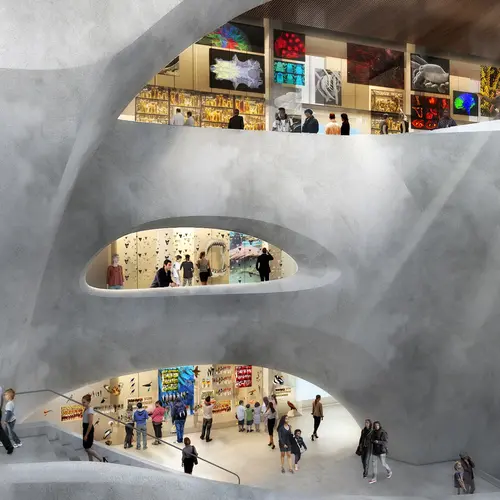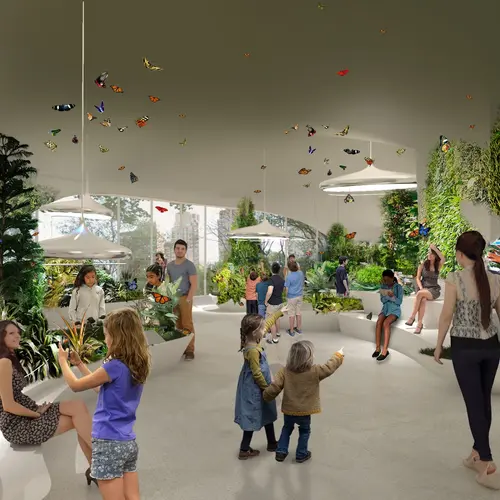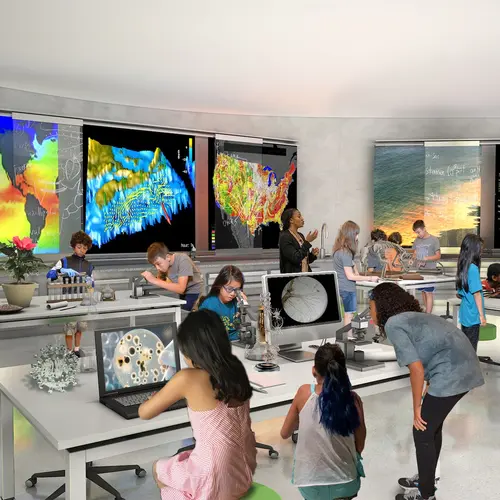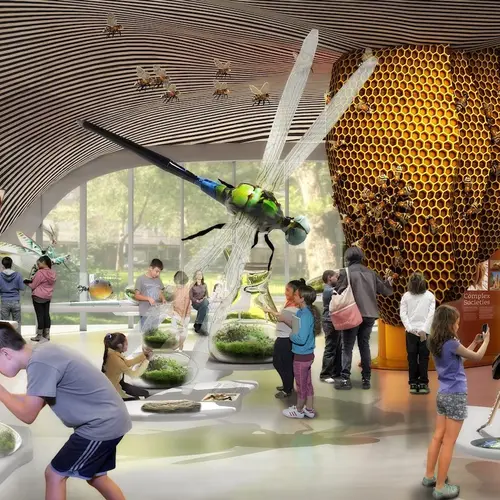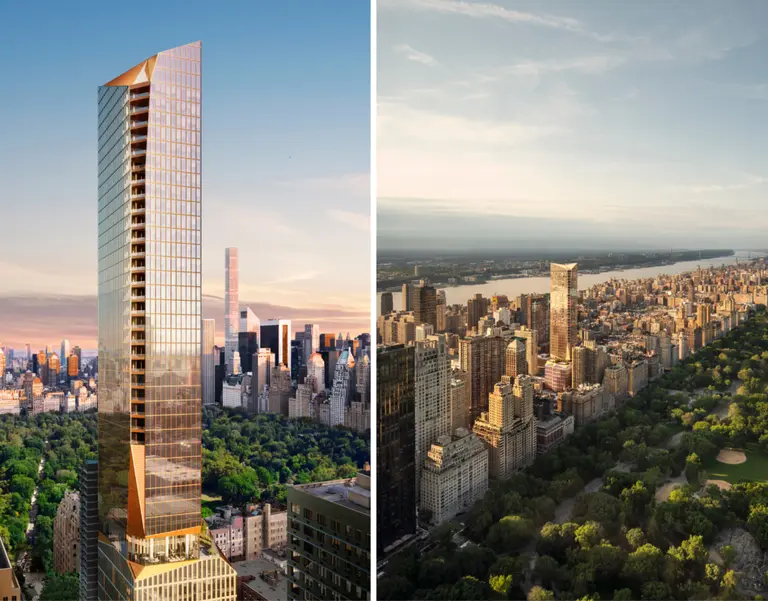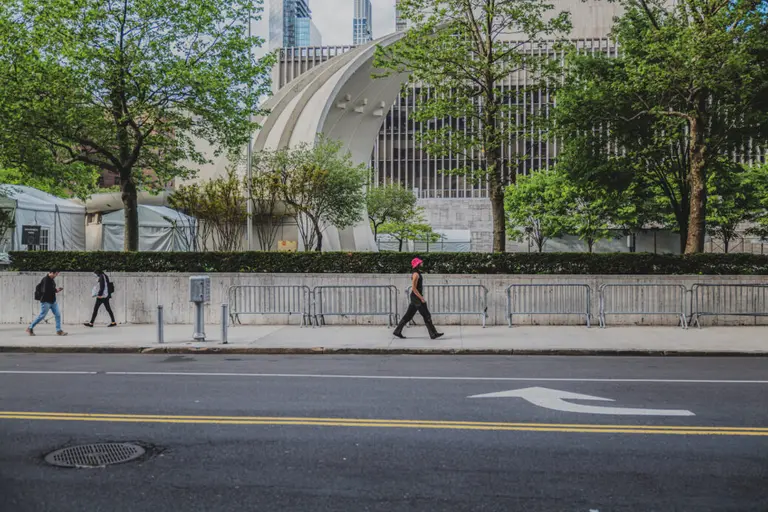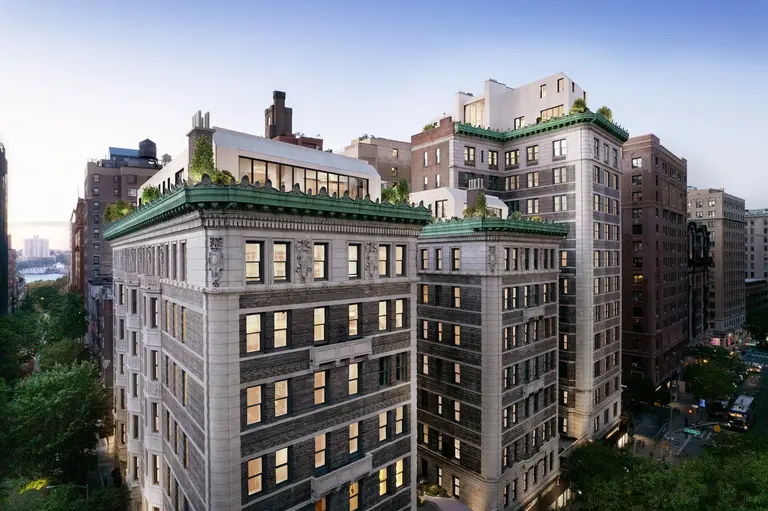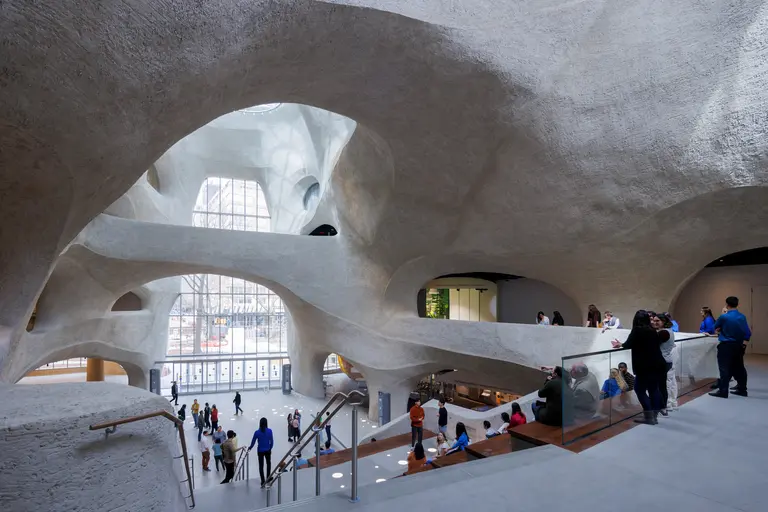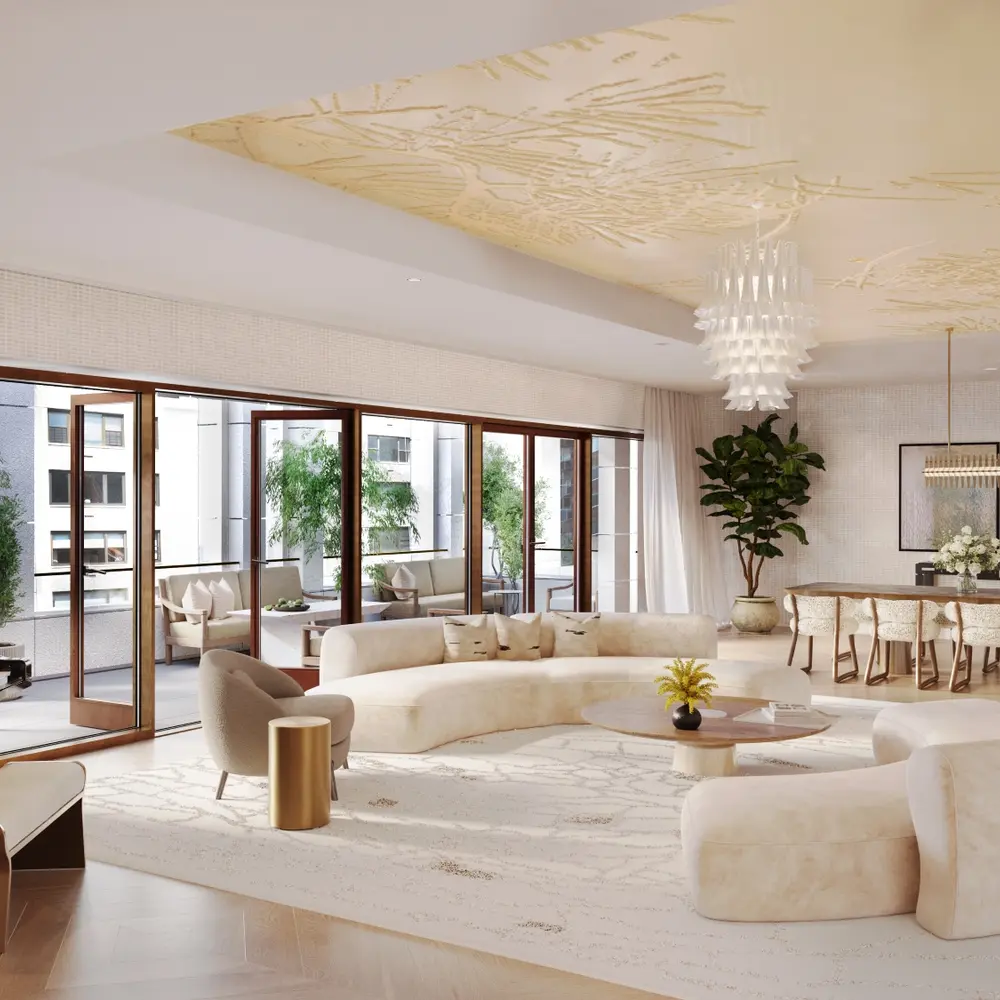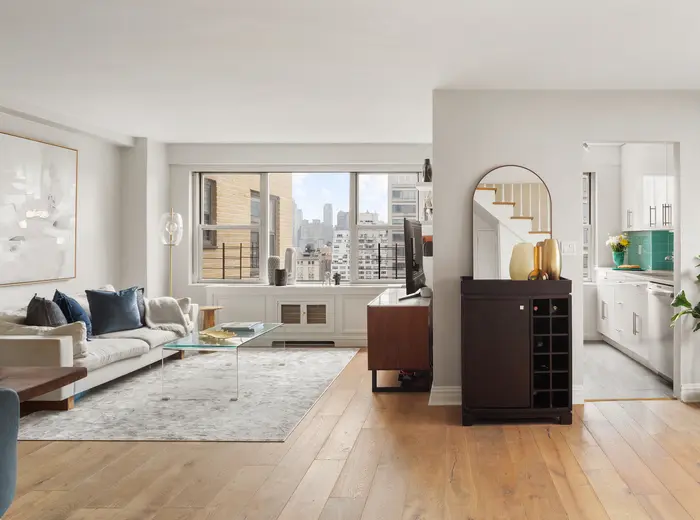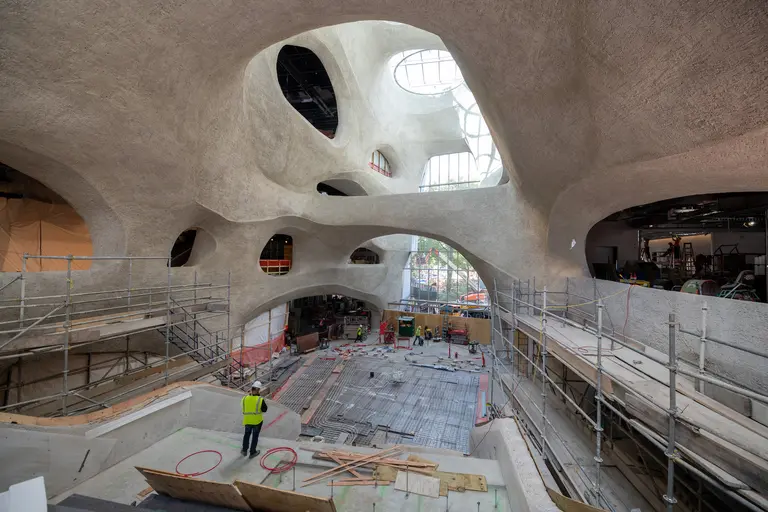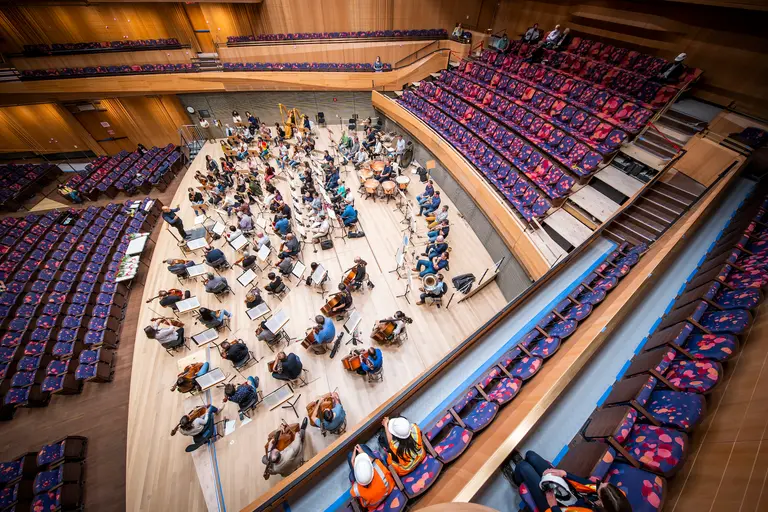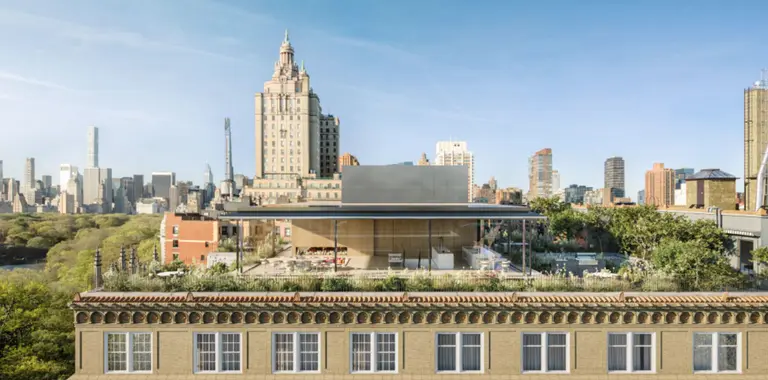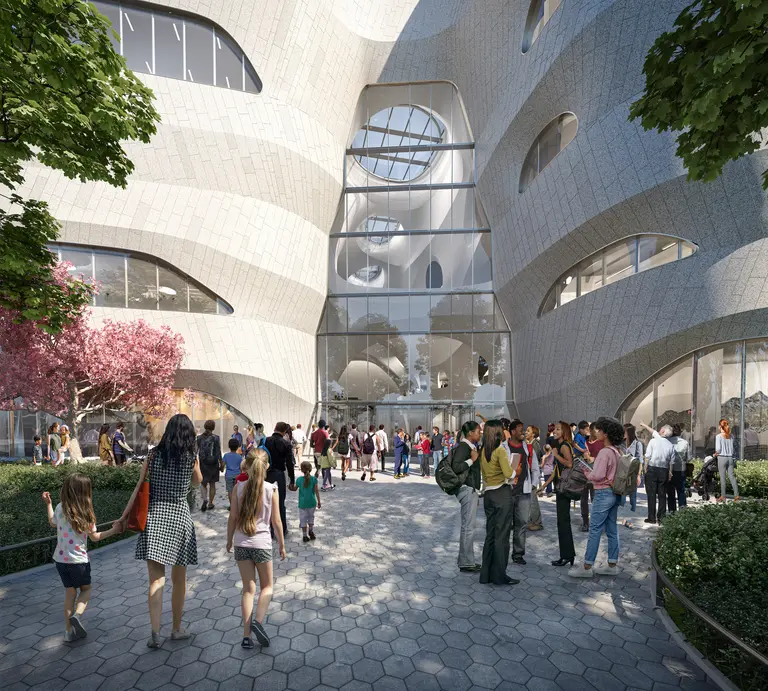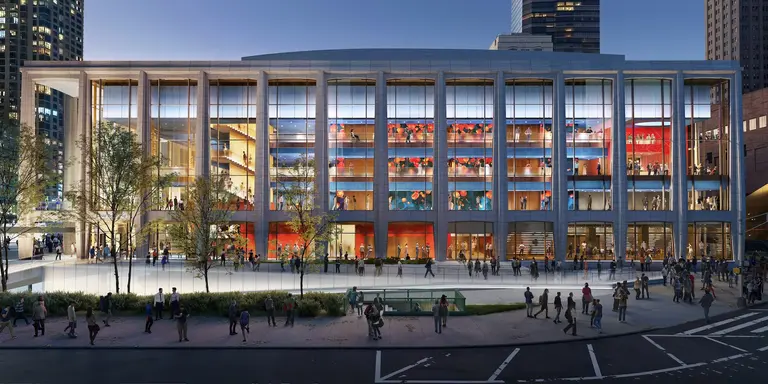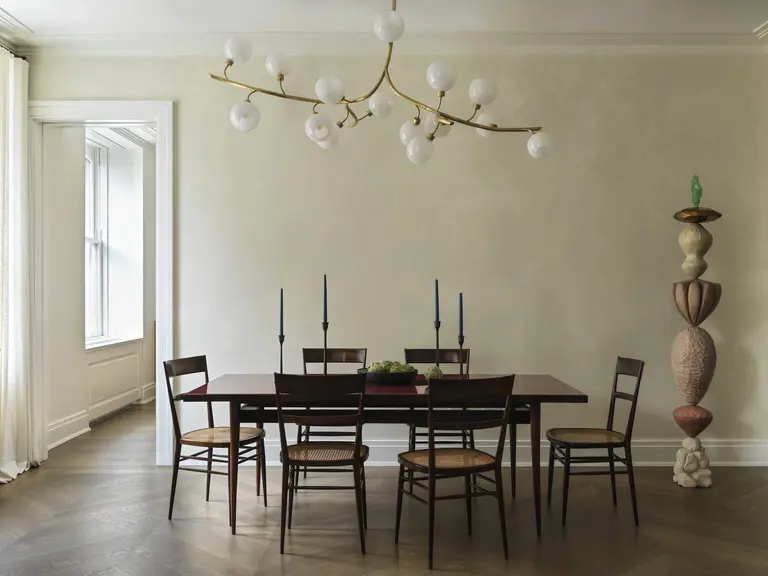Jeanne Gang’s $340M Museum of Natural History expansion gets new interior renderings, details
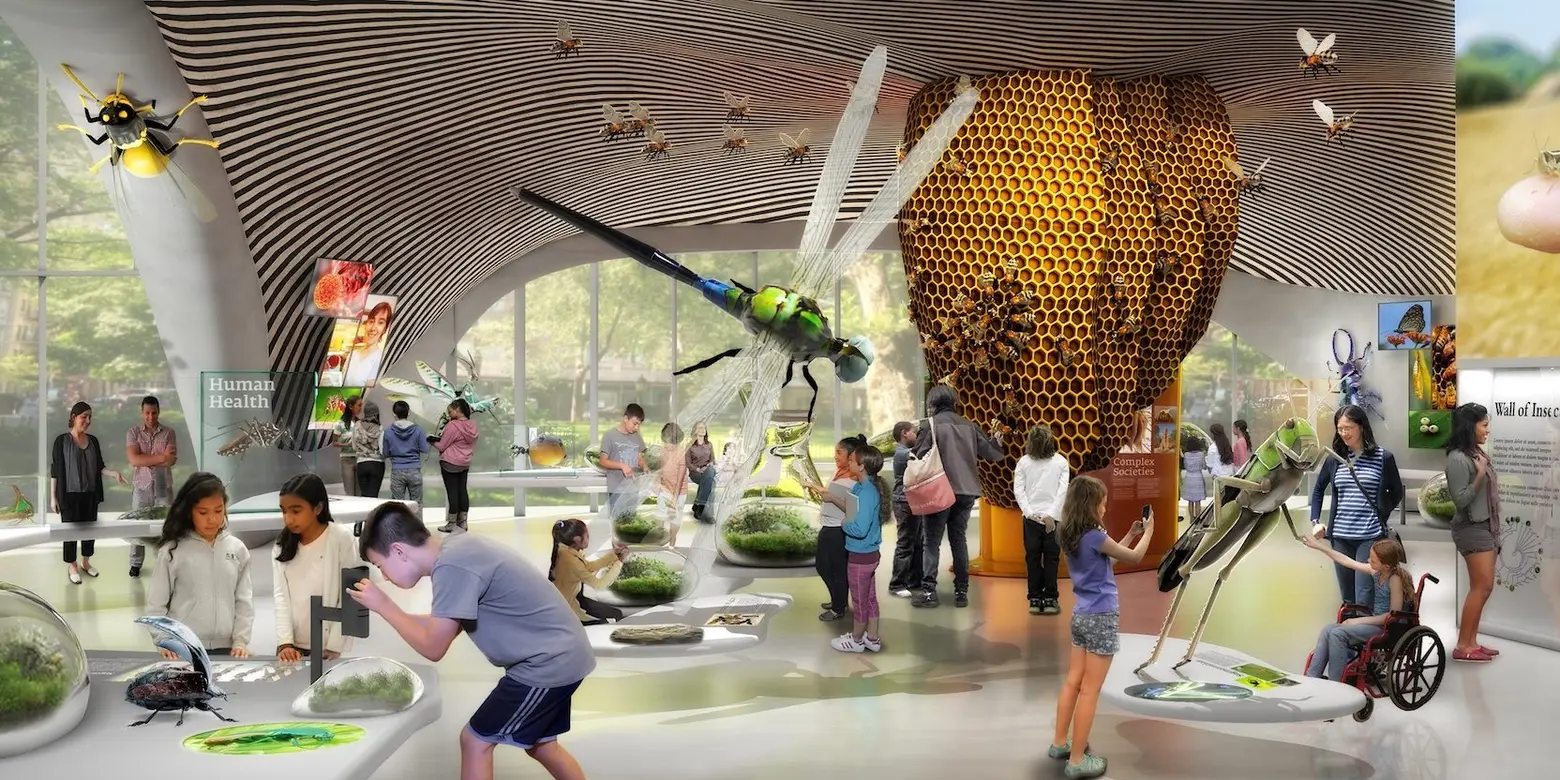
After the architects at Studio Gang tweaked their proposal for the American Museum of Natural History expansion to preserve more public parkland out front, the Landmarks Preservation Commission unanimously approved the plans in October. And now that things are moving ahead, and the price has jumped from $325 to $340 million, the institution shared new details about how the 235,000-square-foot Richard Gilder Center for Science, Education and Innovation will operate. The update comes with a fresh set of interior renderings, which include views of the Butterfly Vivarium, Insectarium, and other educational spaces.
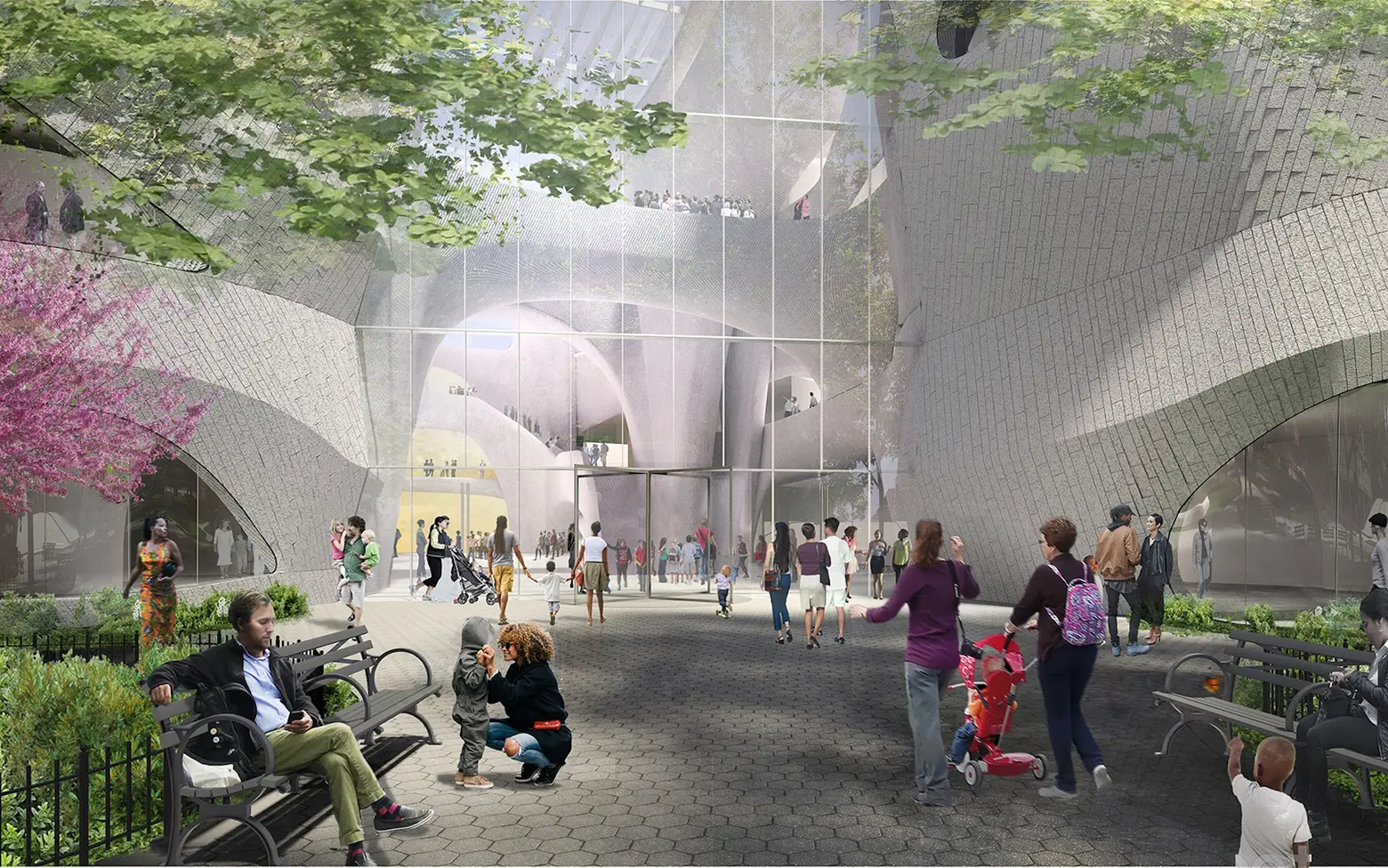
The news come after a presentation yesterday by Jeanne Gang, AMNH president Ellen Futter, and other museum affiliates including astrophysicist Neil deGrasse Tyson. In a press release, Futter said, “There is a growing hunger among the public for information and learning experiences that are trusted and authentic—particularly when many of the most pressing issues of our time are highly complex and science-based. By showcasing the frontiers of research in ways that align with how people learn today, the Gilder Center will empower our visitors to directly engage with 21st-century science and with the larger world around them, while offering inspiring new spaces and opportunities for shared learning, discovery, and community.” This includes several tech-focused offerings, such as the Invisible Worlds Theater, a 9,520-square-foot immersive theater that will explore current scientific topics using modern visualization technologies.
The highlight of the new space will be the 21,000-square-foot, glass-walled Collections Core, where 3.9 specimens (roughly 10 percent of the Museum’s 33 million+ specimens and objects) will be housed. This space will me made up of working collections areas for research, observation areas, and exhibits on everything from geological specimens and meteorites to ethnographic treasures.
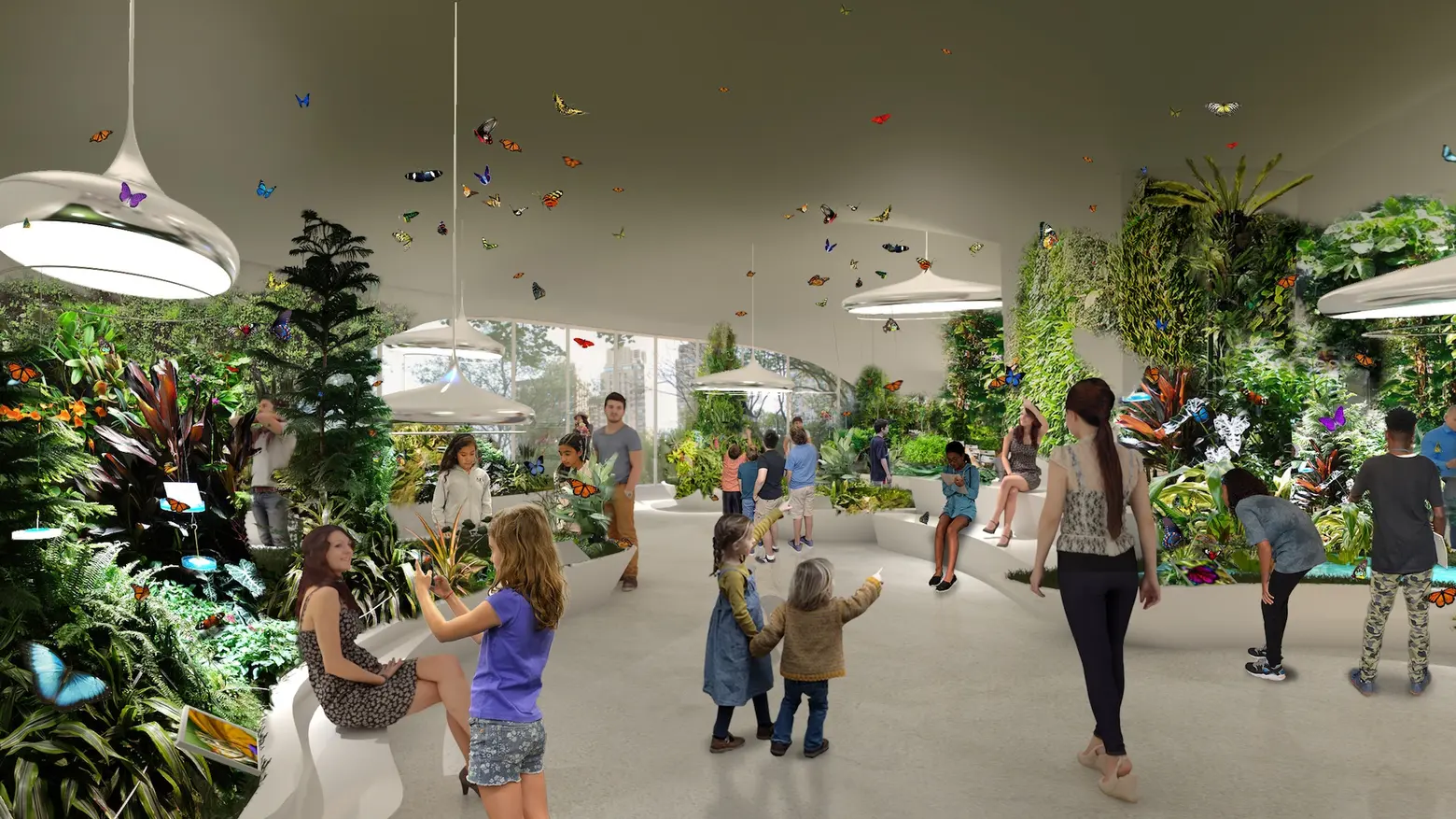
The first floor of the Core will be a 5,000-square-foot Insectarium. Though insects account for 80 percent of the planet’s biodiversity, this will be the first museum gallery specifically dedicated to insects in more than 50 years. In addition to digital displays and exhibits, the facility will offer a space where visitors can use tools like high-tech scanning electron microscopes to explore insect data.
Above the Insectarium will be the 3,000-square-foot, year-round Buttery Vivarium, which will double the space of the existing seasonal Butterfly Conservatory. There will be different “environments,” including a meadow and a pond, where visitors can view live butterflies.
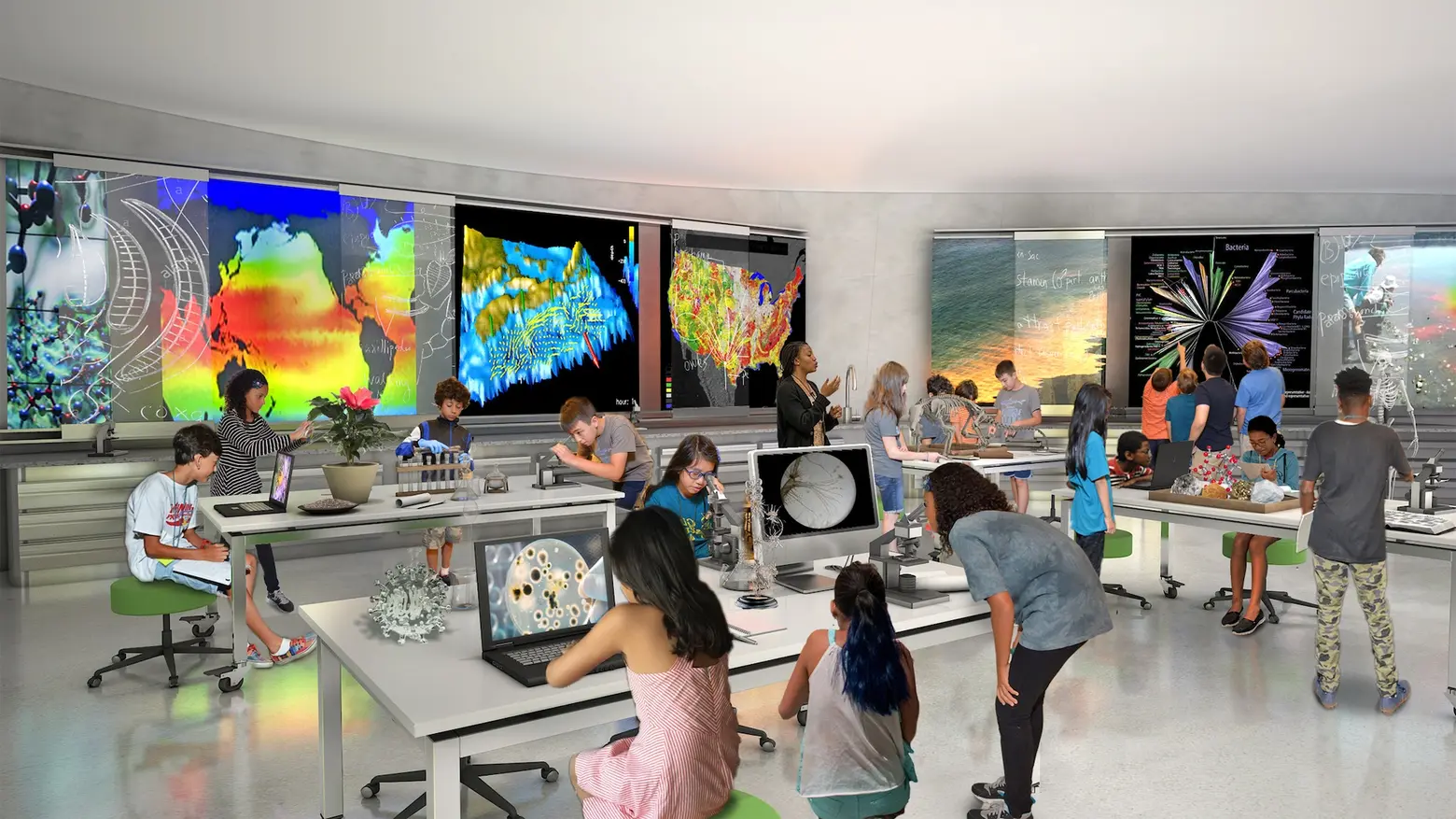
The Center will have 15 dedicated educational spaces: six classrooms for pre-K through 4th grade students; three middle school classrooms; and six high school classrooms, one of which will include a new science visualization learning lab. There will also be a dedicated area for teachers’ professional development, as well as an adult learning center and more accessible access to the 3,250-square-foot Research Library and Learning Center.
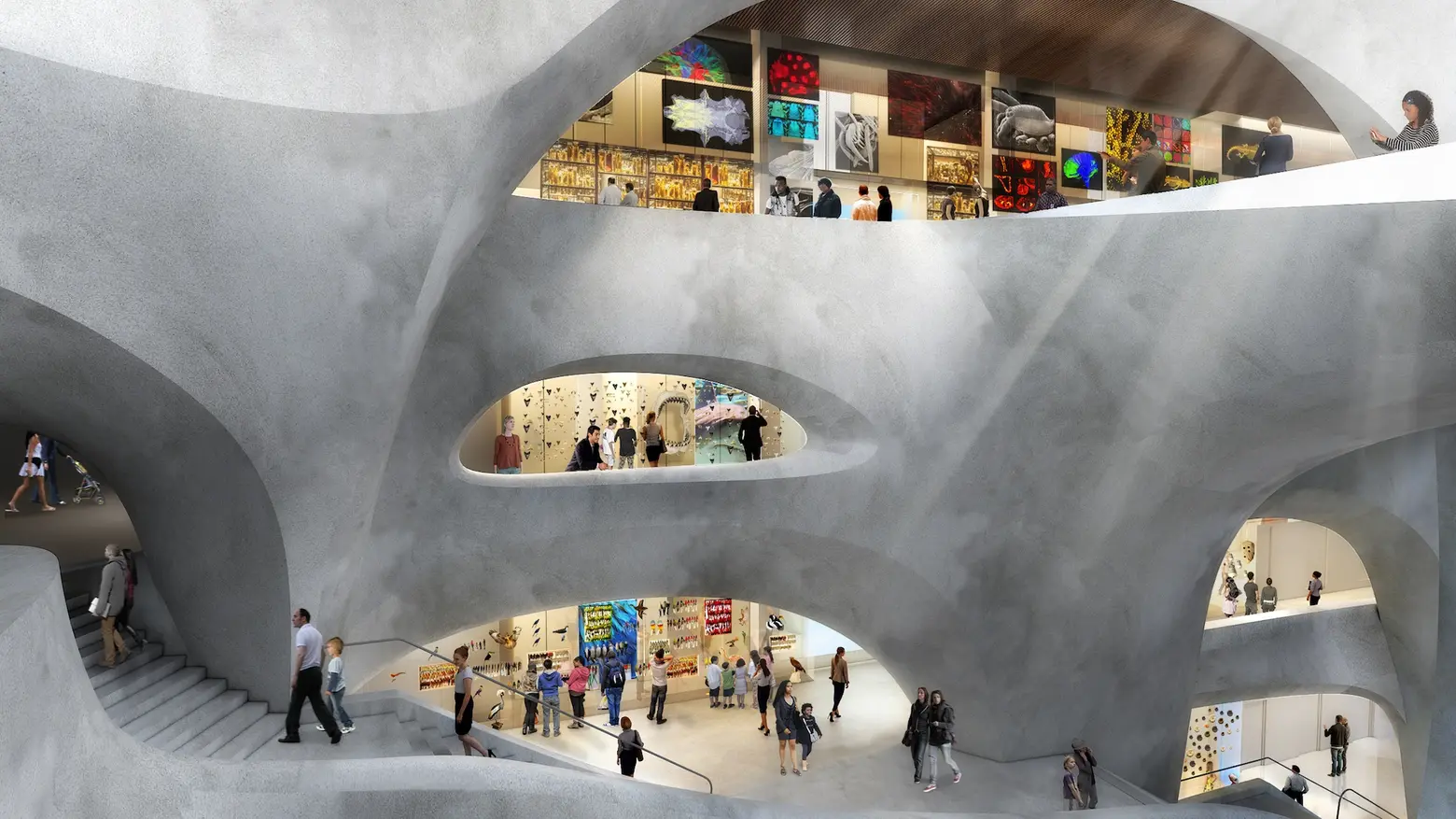
In terms of the interior design, as 6sqft previously explained, Jeanne Gang was inspired by natural elements like ““geological canyons, glacial forms,” and she employed an undulating reinforced concrete structure that not only expresses this vision, but structurally supports the space and carves out different levels and areas. A major element of the redesign is accessibility. The expansion will add more than 30 access points across 10 buildings, helping to solve long-present circulation issues.
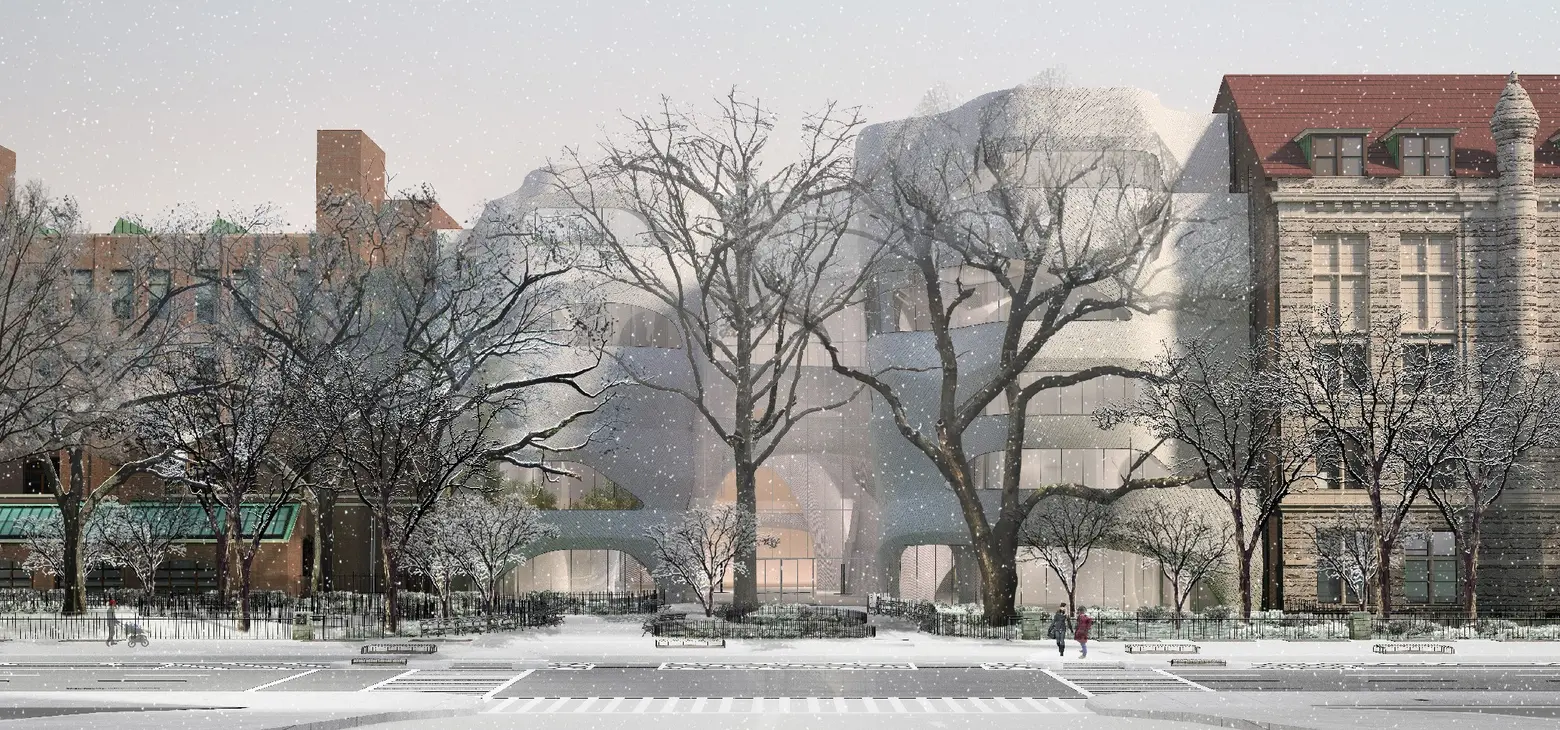
Though the price tag increased, the museum has already raised $277 million of the $340 million projected budget. In addition, the city has committed $70 million and the state $12 million. Completion is anticipated for 2020, at the conclusion of AMNH’s 150th anniversary year.
RELATED:
- Landmarks lauds Natural History Museum expansion plan, see new renderings
- Revised Museum of Natural History Expansion files with LPC, preserves more park land
- Renderings Revealed for Jeanne Gang’s $325M Museum of Natural History Expansion
Renderings via Studio Gang
